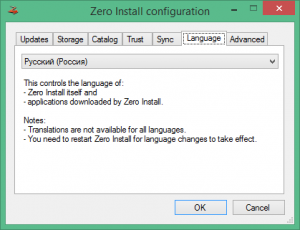

Falling back to YUV mode (consider using -yuv option). will try to handle this by checking against supported formats.
ZERO INSTALL DRIVER
I: Could not obtain the requested pixelformat: MJPG, driver gave us: YUYV Now, it's time to test the stream: mjpg_streamer -i "input_uvc.so -r 640x480 -f 30" -o "output_http.so" Please note that I installed the tool ( make install) but I think that it's not mandatory.
ZERO INSTALL INSTALL
Webcam stream with "mjpg-streamer" apt-get install cmake git clone make To do that, Octoprint website advise to use mjpg-streamer.

To be able to use the webcam with Octoprint, the webcam stream must be exposed over HTTP. So the webcam can be used at 30 fps with the 640x480 resolution. Installed and used some tools to see the capacity of the webcam. I checked on the UVC Linux driver website, and it should be supported:ġe4e:0100 / USB 2.0 Camera / Etron TechnologiesĪfter looking around on the web to get it working, I understood that I just had to enable the kernel module: modprobe ls -ltrh /dev/video*Ĭrw-rw- 1 root video 81, 0 May 12 19:17 lsusbīus 004 Device 002: ID 1e4e:0100 Cubeternet WebCam Module Alias: "usb:v1E4Ep0100d1218dcEFdsc02dp01ic0Eisc02ip00in01"Ĭonfig Status: cfg=new, avail=yes, need=no, active=unknown To discover the webcam informations, I had to install hwinfo apt get install hwinfo -usb Ls: cannot access '/dev/video*': No such file or directoryīus 008 Device 001: ID 1d6b:0001 Linux Foundation 1.1 root hubīus 005 Device 001: ID 1d6b:0002 Linux Foundation 2.0 root hubīus 007 Device 001: ID 1d6b:0001 Linux Foundation 1.1 root hubīus 004 Device 001: ID 1d6b:0002 Linux Foundation 2.0 root hubīus 006 Device 002: ID 0403:6001 Future Technology Devices International, Ltd FT232 USB-Serial (UART) ICīus 006 Device 001: ID 1d6b:0001 Linux Foundation 1.1 root hubīus 003 Device 001: ID 1d6b:0002 Linux Foundation 2.0 root hubīus 002 Device 001: ID 1d6b:0001 Linux Foundation 1.1 root hubīus 001 Device 001: ID 1d6b:0002 Linux Foundation 2.0 root hub Once that the OS booted, I tried to see if the webcam was recognized: ls -ltrh /dev/video*

I found some useful informations on the Sunxi website. I removed the micro USB breakout board and put some pin headers:ĪRMBIAN 5.38 stable Ubuntu 16.04.4 LTS 4.14.18-sunxi I chose to use the USB-DM2 / USB-DP2 as they are close to 5V and GND pins. We can see that 2 USB port pins are available (USB-Dx2 / USB-Dx3). Connect the webcam to the Orange Pi Zero HardwareĪs the only USB port socket on the Orange PI Zero is used by the 3D printer, I looked at the Orange PI Zero pinout: The webcam is an UVC compatible device, which is a good news as it supported by Linux.
ZERO INSTALL WINDOWS
It seems that the module is just connected through an USB interface !Īnd it works! No driver to install to get it work with Windows 10. The chip on the module is an Etron eSP268.Īnd 4 wires are connected to the module (red / black / blue / white). I found a little module with a camera on it, and I asked myself if it could be reused.
ZERO INSTALL ANDROID
I recently dismantled an old Android 2.2 notebook before throwing it away (based on the Wondermedia WM8650). I'm using the basic Orange Pi Zero with 512Mo RAM Webcam module

Remark: when I wrote this article, I discovered that new editions of the Orange Pi Zero exists (Plus / Plus2 H3, H5.). The best guide I found is the one from deloarts. In a previous blog entry, I explained (in French) that I added Octoprint to my Dagoma DiscoEasy200 thanks to an Orange Pi Zero.


 0 kommentar(er)
0 kommentar(er)
